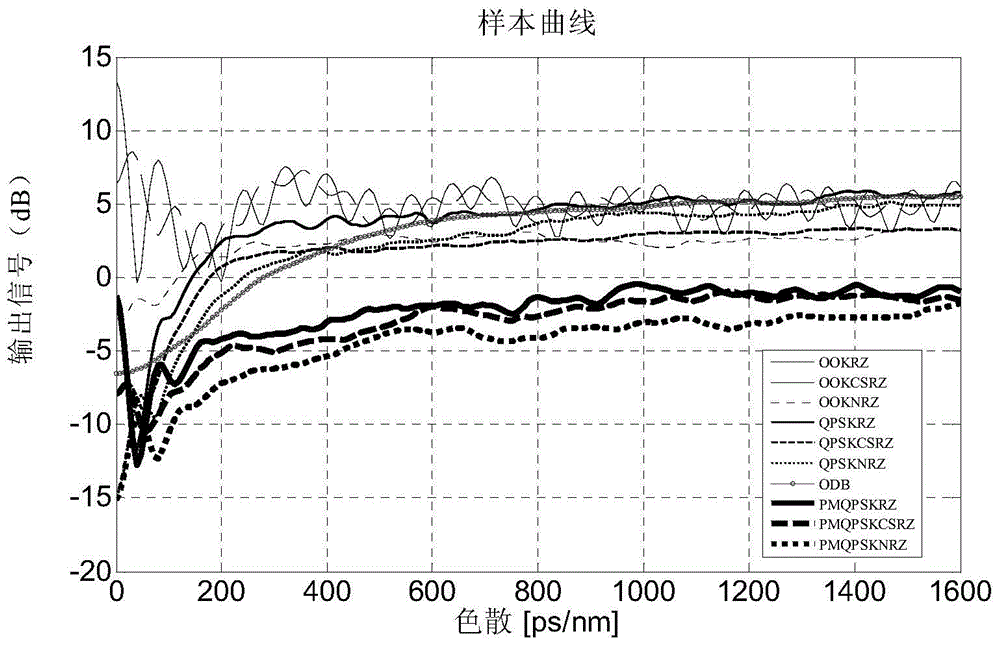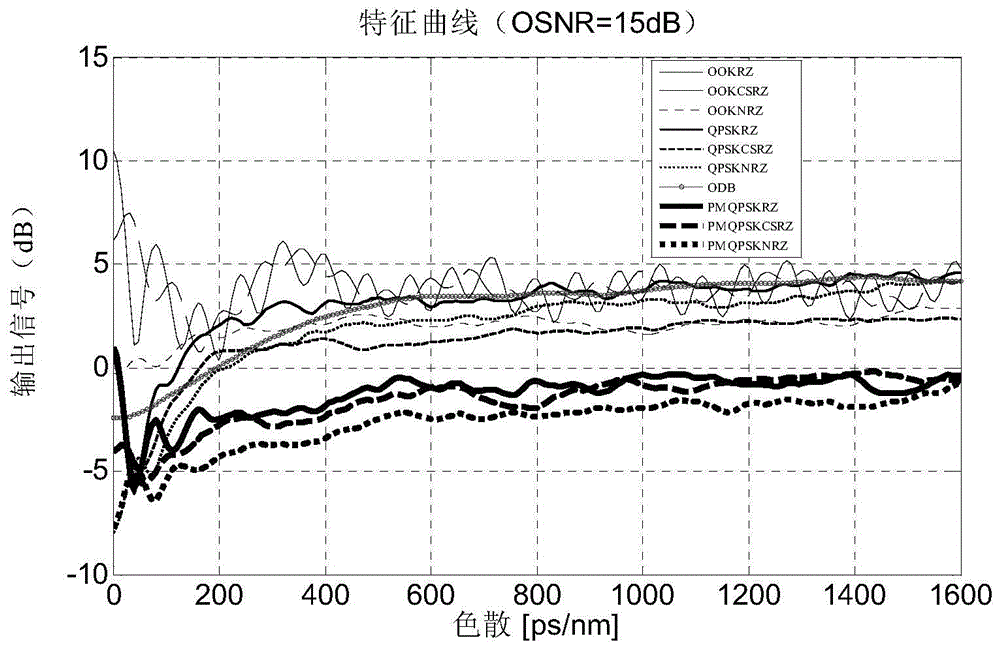Optical signal modulation format recognition method and system based on digital nonlinear processing
A technology of nonlinear processing and modulation format, which is applied in the field of optical signal modulation format identification method and system, can solve the problems of signal transmission dispersion and OSNR degradation tolerance, narrow working band, and large device volume, etc., to achieve high cost performance and work The effect of wide band and low speed requirement
- Summary
- Abstract
- Description
- Claims
- Application Information
AI Technical Summary
Problems solved by technology
Method used
Image
Examples
Embodiment Construction
[0032] like figure 1 The modulation format recognition system shown includes: a tunable dispersion compensator (TDC) 1, an optical amplifier (OA) 2, an optical filter 3, a high-speed optical detector 4, a low-speed asynchronous sampling and analog-to-digital converter 5, and a main control module6. The optical signal to be identified is first counted into the TDC, and the TDC applies a certain CD value to the optical signal to be identified, and its output optical signal enters the OA. The OA is used to amplify the optical signal to a certain power, and then input the optical signal into the high-speed optical detector through the optical filter; the high-speed optical detector converts the input optical signal into an electrical signal, and then inputs the electrical signal into the low-speed asynchronous sampling and analog number converter. The low-speed asynchronous sampling unit in the low-speed asynchronous sampling and analog-to-digital converter performs asynchronous...
PUM
 Login to View More
Login to View More Abstract
Description
Claims
Application Information
 Login to View More
Login to View More - R&D
- Intellectual Property
- Life Sciences
- Materials
- Tech Scout
- Unparalleled Data Quality
- Higher Quality Content
- 60% Fewer Hallucinations
Browse by: Latest US Patents, China's latest patents, Technical Efficacy Thesaurus, Application Domain, Technology Topic, Popular Technical Reports.
© 2025 PatSnap. All rights reserved.Legal|Privacy policy|Modern Slavery Act Transparency Statement|Sitemap|About US| Contact US: help@patsnap.com



